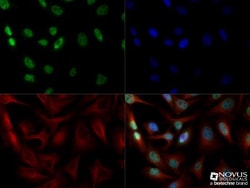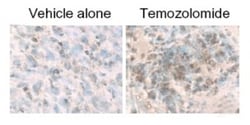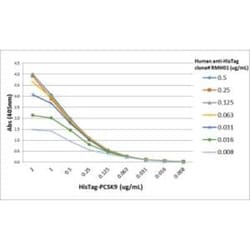UserName

Bio Techne
Bio-Techne est un développeur, fabricant et fournisseur mondial de réactifs, d'instruments analytiques et de diagnostique de précision de haute qualité. Que vous soyez à la pointe de la recherche universitaire, que vous traduisiez des découvertes fondamentales en pistes thérapeutiques ou que vous travailliez dans un établissement qui exige le plus haut niveau de tests diagnostiques, nos outils et solutions éprouvés permettent aux scientifiques et aux cliniciens d'obtenir des résultats reproductibles et cohérents. Choisir Bio-Techne, c'est avoir la certitude que chaque solution que vous utilisez vous permettra d'obtenir de meilleures réponses.
- A propos de Bio Techne
- Annonce
- Tous les produits
- Offres spéciales
Top catégories
Ressources connexes

Optimizing Organoid Culture Conditions
Une note d'application démontrant la valeur des protéines R&D Systems™ pour obtenir des conditions de culture d'organoïdes robustes et reproductibles.
- Nom de fichier
- 23227_bio_techne_optimizing_organoids_Fisherised_v2.pdf
- Taille
- 1 MB
- Format
- application/pdf

Realize Your Protein and Cell Potential
Réalisez le potentiel de vos protéines et de vos cellules
- Nom de fichier
- 23227_bio_techne_realize_protein_Fisherised.pdf
- Taille
- 3 MB
- Format
- application/pdf

Organ-on-a-Chip Technology
Des progrès, des défis et un avenir passionnant
- Nom de fichier
- 23227_bio_techne_organ_on_a_chip_technology_progress_Fisherised.pdf
- Taille
- 326 KB
- Format
- application/pdf
Fisher Scientific Europe annonce un nouvel accord de distribution avec Bio-Techne en Europe
Paris, France 01-05-2024
Thermo Fisher Scientific, l'un des principaux fournisseurs de produits et services de laboratoire, a le plaisir d'annoncer une étape importante dans son engagement à fournir des solutions de pointe à ses clients. À compter du 1er mai 2024, Thermo Fisher conclura un accord de distribution stratégique en Europe avec Bio-Techne (NASDAQ : TECH), une société internationale spécialisée dans les sciences de la vie qui fournit des outils innovants et des réactifs bioactifs aux communautés de la recherche et du diagnostic clinique.
Ce partenariat marque une collaboration importante entre deux leaders industriels dans les domaines de la recherche scientifique, du diagnostic et de la biotechnologie. Dans le cadre de cet accord, Thermo Fisher, par l'intermédiaire de Fisher Scientific Europe, distribuera le vaste portefeuille de produits innovants de Bio-Techne, notamment des anticorps, des protéines, des kits d'immunodosage, des réactifs et des enzymes aux laboratoires et aux instituts de recherche dans toute l'Europe.
« Nous sommes ravis de forger ce partenariat avec Bio-Techne, une société réputée pour ses avancées pionnières dans l'industrie des sciences de la vie », a déclaré Claire Wallace, présidente de la chaîne Fisher Scientific, Europe. « En ajoutant les produits de haute qualité de Bio-Techne à notre portefeuille complet, nous visons à donner aux scientifiques et aux chercheurs les outils dont ils ont besoin pour réaliser des découvertes révolutionnaires et des progrès dans le domaine des soins de santé. »
Les produits de pointe de Bio-Techne sont conçus pour accélérer la recherche et améliorer les résultats dans des domaines tels que la thérapie cellulaire et génique, l'immunologie, les neurosciences, etc. Avec cette collaboration, Thermo Fisher renforce son engagement à fournir à ses clients l'accès aux technologies et à l'expertise les plus récentes, afin de faire progresser les connaissances scientifiques et d'améliorer la santé humaine.
« Nous sommes ravis de nous associer à Thermo Fisher pour étendre la portée de nos produits et services dans toute l'Europe », a déclaré Kim Kelderman, président et directeur général de Bio-Techne. « En tirant parti du vaste réseau de distribution européen et de l'expertise industrielle de Fisher Scientific Channel, nous souhaitons renforcer le soutien aux chercheurs et accélérer les découvertes scientifiques qui répondent à certains des défis les plus pressants dans le domaine de la santé aujourd'hui. »
Cet accord de distribution souligne l'engagement de Thermo Fisher à encourager l'innovation et la collaboration au sein de la communauté scientifique. Grâce à des partenariats stratégiques avec des entreprises de premier plan comme Bio-Techne, Thermo Fisher continue de renforcer sa position de partenaire de confiance pour les chercheurs et les laboratoires dans toute l'Europe.
À propos de Bio-Techne
Bio-Techne Corporation (NASDAQ : TECH) est une société internationale de sciences de la vie qui fournit des outils innovants et des réactifs bioactifs aux communautés de la recherche et du diagnostic clinique. Les produits de Bio-Techne facilitent les recherches scientifiques sur les processus biologiques ainsi que sur la nature et l'évolution de certaines maladies. Ils contribuent aux efforts de découverte de médicaments et fournissent les moyens d'effectuer des tests et des diagnostics cliniques précis. Avec des milliers de produits dans son portefeuille, Bio-Techne a généré plus de 1,1 milliard de dollars de ventes nettes au cours de l'exercice 2023 et compte environ 3 100 employés dans le monde.
Vous avez des questions ? Contactez un spécialiste >
Novus Biologicals Factor VIII Antibody - BSA Free, Novus Biologicals™
Rabbit Polyclonal Antibody has been used in 4 publications
| État réglementaire | RUO |
|---|---|
| Immunogène | A synthetic peptide made to a C-terminal portion of human Factor VIII (between amino acids 2100-2250) [UniProt P00451] |
| Applications | Western Blot,Immunofluorescence,Immunohistochemistry (Paraffin) |
| Méthode de purification | Affinity Purified |
| Espèces cibles | Mouse,Rat |
| Espèces hôtes | Rabbit |
| Symboles de gène(s) | F8 |
| Antigène | Factor VIII |
Novus Biologicals NPLOC4 Antibody, Novus Biologicals™
Rabbit Polyclonal Antibody has been used in 2 publications
| Applications | Western Blot,Immunohistochemistry,Immunocytochemistry,Immunofluorescence,Immunohistochemistry (Paraffin) |
|---|---|
| Spécificité du test | Specificity of human NPLOC4 antibody verified on a Protein Array containing target protein plus 383 other non-specific proteins. |
| Isotype | IgG |
| Conjugué | Unconjugated |
| Espèces cibles | Human,Mouse,Rat |
| Primaire ou secondaire | Primary |
| Contenu et stockage | Store at 4C short term. Aliquot and store at -20C long term. Avoid freeze-thaw cycles. |
| État réglementaire | RUO |
| Immunogène | This antibody was developed against Recombinant Protein corresponding to amino acids:VRDECLLPCKDAPELGYAKESSSEQYVPDVFYKDVDKFGNEITQLARPLPVEYLIIDITTTFPKDPVYTFSISQNPFPIENRDVLGETQDFHSLATYLSQNTSSVFLDTISDFHLLLFLVTNE |
| Classification | Polyclonal |
| Identification génétique (Entrez) | 55666 |
| Méthode de purification | Affinity Purified |
| Espèces hôtes | Rabbit |
| Symboles de gène(s) | NPLOC4 |
| Formule | PBS (pH 7.2) and 40% Glycerol with 0.02% Sodium Azide |
| Alias de gène | FLJ20657, FLJ23742, KIAA1499nuclear protein localization protein 4 homolog, NPL4Protein NPL4, nuclear protein localization 4 homolog (S. cerevisiae) |
| Antigène | NPLOC4 |
Novus Biologicals PGC1 alpha Antibody - BSA Free, Novus Biologicals™
Rabbit Polyclonal Antibody has been used in 156 publications
| Applications | Western Blot,ChIP Assay,Flow Cytometry,Immunohistochemistry,Immunocytochemistry,Immunoprecipitation |
|---|---|
| Spécificité du test | Human and Mouse. Squirrel reactivity reported in the scientific literature. Expected reactivity based on sequence identity: monkey (98%), equine (94%), canine (93%) and rat (88%). Rat reactivity reported in scientific literature (PMID: 22208735). |
| Isotype | IgG |
| Conjugué | Unconjugated |
| Espèces cibles | Human,Mouse,Rat,Pig,Goat,Hamster,Sheep,Squirrel |
| Concentration | 1.0 mg/mL |
| Primaire ou secondaire | Primary |
| Contenu et stockage | Store at 4C short term. Aliquot and store at -20C long term. Avoid freeze-thaw cycles. |
| État réglementaire | RUO |
| Numéro d’ordre du gène | Q9UBK2 |
| Dilution | Western Blot 1 - 2 ug/ml, Chromatin Immunoprecipitation reported by customer review, Flow Cytometry 1 - 2.5 ug/ml, Immunohistochemistry 1:10-1:500, Immunocytochemistry/Immunofluorescence 1:1000. Use reported in scientific literature (PMID 24508229), Immunoprecipitation reported in scientific literature (PMID 24769256), Immunohistochemistry-Paraffin 1:200, Immunohistochemistry-Frozen reported in scientific literature (PMID 25981953), Flow (Intracellular) 1 - 2.5 ug/ml, Chromatin Immunoprecipitation (ChIP), Knockout Validated, KnockDown Validated reported in scientific literature (PMID 35455432) |
| Immunogène | This PGC1 alpha Antibody was developed against a recombinant protein made to an internal portion of the human PGC-1 alpha protein (within residues 400-550). [Swiss-Prot# Q9UBK2]. |
| Poids moléculaire de l’antigène | 91 kDa |
| Classification | Polyclonal |
| Identification génétique (Entrez) | 10891 |
| Méthode de purification | Affinity Purified |
| Disciplines de recherche | Cancer, Cholesterol Metabolism, Chromatin Research, Diabetes Research, Lipid and Metabolism, mTOR Pathway, Neuroscience, Transcription Factors and Regulators |
| Espèces hôtes | Rabbit |
| Symboles de gène(s) | PPARGC1A |
| Formule | PBS with 0.02% Sodium Azide |
| Alias de gène | LEM6, Ligand effect modulator 6, ligand effect modulator-6, L-PGC-1alpha, peroxisome proliferative activated receptor, gamma, coactivator 1, alpha, peroxisome proliferator-activated receptor gamma coactivator 1 alpha transcript variant B4-3ext, peroxisome proliferator-activated receptor gamma coactivator 1 alpha transcript variant B4-8a, peroxisome proliferator-activated receptor gamma coactivator 1 alpha transcript variant B5-NT, peroxisome proliferator-activated receptor gamma coactivator 1-alpha, peroxisome proliferator-activated receptor gamma, coactivator 1 alpha, PGC1, PGC-1(alpha), PGC1A, PGC-1-alpha, PGC1APGC-1(alpha), PGC1peroxisome proliferative activated receptor, gamma, coactivator 1, PGC-1v, PPAR gamma coactivator variant form, PPAR gamma coactivator-1, PPARgamma coactivator 1alpha, PPAR-gamma coactivator 1-alpha, PPARGC1, PPARGC-1-alpha |
| Antigène | PGC1 alpha |
Novus Biologicals Tyrosine Hydroxylase Antibody, Novus Biologicals™
Rabbit Polyclonal Antibody has been used in 147 publications
Novus Biologicals BATF3 Antibody (841702) [DyLight 405], Novus Biologicals™
Mouse Monoclonal Antibody
Novus Biologicals DEC1 Antibody - BSA Free, Novus Biologicals™
Rabbit Polyclonal Antibody has been used in 24 publications
| Applications | Western Blot,ChIP Assay,Flow Cytometry,ELISA,Immunohistochemistry,Immunofluorescence,Immunohistochemistry,Immunohistochemistry (Paraffin),Immunoprecipitation |
|---|---|
| Isotype | IgG |
| Conjugué | Unconjugated |
| Espèces cibles | Human,Mouse,Rat |
| Concentration | 1 mg/mL |
| Primaire ou secondaire | Primary |
| Contenu et stockage | Store at 4C short term. Aliquot and store at -20C long term. Avoid freeze-thaw cycles. |
| État réglementaire | RUO |
| Numéro d’ordre du gène | O14503 |
| Dilution | Western Blot 1:5000-1:15000, Simple Western 1:50, Chromatin Immunoprecipitation reported in scientific literature (PMID 29715265), Flow Cytometry 2-5 ug/ml, ELISA reported in scientific literature (PMID 31061528), Immunohistochemistry, Immunocytochemistry/Immunofluorescence 1:500 - 1:1000, Immunoprecipitation, Immunohistochemistry-Paraffin, Immunoblotting, Chromatin Immunoprecipitation (ChIP), Chromatin Immunoprecipitation Sequencing reported in scientific literature (PMID 31061528) |
| Immunogène | Synthetic peptide made to a C-terminal region of human DEC1 (between amino acids 350-412) [UniProt O14503] |
| Poids moléculaire de l’antigène | 46 kDa |
| Classification | Polyclonal |
| Identification génétique (Entrez) | 8553 |
| Méthode de purification | Affinity Purified |
| Disciplines de recherche | HIF Target Genes, Hypoxia |
| Espèces hôtes | Rabbit |
| Symboles de gène(s) | BHLHE40 |
| Formule | PBS with 0.02% Sodium Azide |
| Alias de gène | basic helix-loop-helix domain containing, class B, 2, basic helix-loop-helix family, member e40, bHLHb2, bHLHe40, Class B basic helix-loop-helix protein 2, class E basic helix-loop-helix protein 40, DEC1HLHB2, differentially expressed in chondrocytes 1, Differentially expressed in chondrocytes protein 1, differentiated embryo chondrocyte expressed gene 1, Enhancer-of-split and hairy-related protein 2, SHARP2, SHARP-2, Stimulated by retinoic acid gene 13 protein, STRA13FLJ99214, Stra14 |
| Antigène | DEC1 |
Novus Biologicals EphA2 Antibody (1C1), PE - Chimeric, Novus Biologicals™
Rabbit Monoclonal Antibody
Novus Biologicals EAAT1/GLAST-1/SLC1A3 Antibody - BSA Free, Novus Biologicals™
Rabbit Polyclonal Antibody has been used in 18 publications
| Applications | Western Blot,Flow Cytometry,ELISA,Immunohistochemistry,Immunocytochemistry,Immunofluorescence,Immunohistochemistry (Paraffin) |
|---|---|
| Spécificité du test | Human, rat and mouse. Based upon 100% immunogen sequence similarity, this antibody is predicted to cross-react with Bovine also. |
| Isotype | IgG |
| Conjugué | Unconjugated |
| Espèces cibles | Human,Mouse,Rat |
| Concentration | 1.0 mg/mL |
| Primaire ou secondaire | Primary |
| Contenu et stockage | Store at 4C short term. Aliquot and store at -20C long term. Avoid freeze-thaw cycles. |
| État réglementaire | RUO |
| Numéro d’ordre du gène | P24942 |
| Dilution | Western Blot 2 μg/mL, Flow Cytometry 1:200-1:500, ELISA 1:100 - 1:2000, Immunohistochemistry 1:10-1:500, Immunocytochemistry/Immunofluorescence 1:10-1:500, Immunohistochemistry-Paraffin 1:50-1:500, Immunohistochemistry-Frozen 1:10-1:500, Flow (Intracellular) 1:500 |
| Immunogène | A synthetic peptide made to a C-terminal portion of the rat SLC1A3 protein (between residues 500-542) [Uniprot: P24942] |
| Poids moléculaire de l’antigène | 60 kDa |
| Classification | Polyclonal |
| Identification génétique (Entrez) | 6507 |
| Méthode de purification | Affinity Purified |
| Disciplines de recherche | Cellular Markers, Cognition and Behavior |
| Espèces hôtes | Rabbit |
| Symboles de gène(s) | SLC1A3 |
| Formule | PBS with 0.02% Sodium Azide |
| Alias de gène | EA6FLJ25094, EAAT1GLAST-1, excitatory amino acid transporter 1, GLAST, GLASTGLAST1, Sodium-dependent glutamate/aspartate transporter 1, solute carrier family 1 (glial high affinity glutamate transporter), member 3, Solute carrier family 1 member 3 |
| Antigène | EAAT1/GLAST-1/SLC1A3 |
Novus Biologicals LC3B Antibody - BSA Free, Novus Biologicals™
Rabbit Polyclonal Antibody has been used in 316 publications
| Applications | Western Blot,Flow Cytometry,Immunohistochemistry,Immunocytochemistry,Immunofluorescence,Immunoprecipitation,Immunohistochemistry (Paraffin),Immunohistochemistry (Frozen),Immunoblot,Immunoassay,Immunohistochemistry (Free Floating),KnockDown |
|---|---|
| Spécificité du test | Human, mouse, rat and bovine. Zebrafish reactivity reported in scientific literature (PMID: 23724125). Canine and primate reactivity reported in scientific literature (PMID: 24027311) Porcine reactivity reported in scientific literature (PMID: 25378587) Other species have not been tested. |
| Isotype | IgG |
| Conjugué | Unconjugated |
| Espèces cibles | Human,Mouse,Rat,Pig,Bacteria,Bovine,Canine,Primate,Zebrafish |
| Concentration | 1.0 mg/mL |
| Primaire ou secondaire | Primary |
| Contenu et stockage | Aliquot and store at -20C or -80C. Avoid freeze-thaw cycles. |
| État réglementaire | RUO |
| Numéro d’ordre du gène | Q9GZQ8 |
| Dilution | Western Blot 1:1000, Simple Western 1:100, Flow Cytometry 1:200, Immunohistochemistry, Immunocytochemistry/Immunofluorescence 0.1-2 ug/ml, Immunoprecipitation, Immunohistochemistry-Paraffin 1:200-1:400, Immunohistochemistry-Frozen 1:400, Immunoblotting, Electron Microscopy, Immunohistochemistry Free-Floating, Knockout Validated, Knockdown Validated |
| Immunogène | Polyclonal LC3B Antibody was made to a synthetic peptide made to the N-terminal region of the human LC3B protein. [Uniprot: Q9GZQ8] |
| Poids moléculaire de l’antigène | 14.688 kDa |
| Classification | Polyclonal |
| Identification génétique (Entrez) | 81631 |
| Méthode de purification | Affinity Purified |
| Disciplines de recherche | Autophagy, Cancer, Cardiovascular Biology, Cellular Markers, Hypoxia, Innate Immunity, Lipid and Metabolism, Macroautophagy, Mitophagy, Neuroscience |
| Espèces hôtes | Rabbit |
| Symboles de gène(s) | MAP1LC3B |
| Formule | PBS with 0.02% Sodium Azide |
| Alias de gène | ATG8F, Autophagy-related protein LC3 B, Autophagy-related ubiquitin-like modifier LC3 B, LC3B, lc3b autophagy marker, lc3-i, ii, MAP1 light chain 3-like protein 2, MAP1A/1BLC3, MAP1A/MAP1B LC3 B, map1lc3b, MAP1LC3B-a, microtubule associated protein 1 light chain 3 beta, microtubule associated protein 3 b, microtubule associated protein 3 beta, microtubule-associated proteins 1A/1B light chain 3, microtubule-associated proteins 1A/1B light chain 3B |
| Antigène | LC3B |
Novus Biologicals Tyrosine Hydroxylase, p Ser40 Antibody, Novus Biologicals™
Rabbit Polyclonal Antibody has been used in 6 publications
Bio Techne
















![Novus Biologicals BATF3 Antibody (841702) [DyLight 405], Novus Biologicals™](https://assets.fishersci.com/TFS-Assets/CCG/Novus-Biologicals/antibodies/Product-Image-DyLight-405.jpg-250.jpg)






